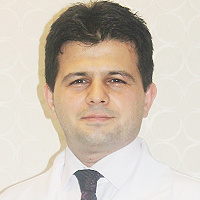Role of novel cardiac biomarkers for the diagnosis, risk stratification, and prognostication among patients with heart failure
Published on: 22nd August, 2019
OCLC Number/Unique Identifier: 8212771729
Background: Current guidelines for diagnosis and management of heart failure (HF) rely on clinical findings and natriuretic peptide values, but evidence suggests that recently identified cardiac biomarkers may aid in early detection of HF and improve risk stratification. The aim of this study was to assess the diagnostic and prognostic utility of multiple biomarkers in patients with HF and left ventricular systolic dysfunction (LVSD).
Methods: High-sensitivity cardiac troponin I (cTnI), N-terminal pro b-type natriuretic peptide (NT-proBNP), interleukin-6 (IL-6), endothelin-1 (ET-1), pro-matrix metalloproteinase-9 (pMMP-9), and tumor necrosis factor-alpha (TNF-α) were measured using single-molecule counting technology in 200 patients with varying stages of HF. Plasma detection with cross-sectional associations of biomarkers across all HF stages, and advanced-therapy and transplant-free survival were assessed using multivariate analysis and Cox regression analyses, respectively.
Results: NTproBNP, pMMP-9, IL-6 were elevated in early, asymptomatic stages of HF, and increased with HF severity. Higher circulating levels of combined IL-6, NTproBNP, and cTnI predicted significantly worse survival at 1500-day follow-up. Cox regression analysis adjusted for ACC/AHA HF stages demonstrated that a higher concentration of IL-6 and cTnI conferred greater risks in terms of time to death, implantation of left ventricular assist device (LVAD), or heart transplantation.
Conclusion: Biomarkers of inflammation, LV remodeling, and myocardial injury were elevated in HF and increased with HF severity. Patients had a significantly higher risk of serious cardiac events if multiple biomarkers were elevated. These findings support measuring NTproBNP, cTnI and IL-6 among patients with HF and LVSD for diagnostic and prognostic purposes.
Our experience with single patch repair of complete atrioventricular septal defects
Published on: 2nd May, 2020
OCLC Number/Unique Identifier: 8588716552
Background: Various surgical methods have been utilized in the management of complete atrioventricular septal defects (CAVSD). Early intervention and achievement of a competent left atrioventricular valve are the key factors for successful treatment.
Methods: A total of 66 patients with complete atrioventricular septal defect have been operated in a tertiary care center. Patient group consisted of 28 males and 38 females with an average age of 6.2 ± 3.3 months. Ventricular and atrial defects were repaired generally with single-patch technique using autogenous pericardium.
Results: Preoperative catheterization and angiography was performed in 41 patients. Single patch and modified single patch techniques were preferred in 57 and 9 patients respectively. The average duration for respiratory support, intensive care unit stay and discharge from hospital were 36 ± 49.3 hours, 4.1 ± 1.9 days, and 10.1 ± 3.3 days respectively. In the left atrioventricular valve mild, moderate and severe regurgitation were detected in 44 (66.6%), 17 (25.7%) and 2 (3%) patients postoperatively. No regurgitation was determined in 3 patients (4.5%). Two cases ended up with mortality (3%).
Conclusion: Single patch repair technique can provide satisfactory surgical outcomes in patients with complete atrioventricular septal defect.
Clinical profile and surgical outcomes of children presenting with teratology of Fallot
Published on: 14th September, 2020
OCLC Number/Unique Identifier: 8667862731
Background: Tetralogy of Fallot (TOF) is a very common cyanotic congenital heart disease presenting early at birth with various degrees of cyanosis. If left uncorrected surgically, can lead to death.
Objectives: This study is aimed at determining pattern and surgical outcome of children with teratology of Fallot in a budding health facility in India over a year period.
Result: A total of 51 children were diagnosed of TOF over the period, of which 66.7% were males with mean age of 48.14 ± 45.36 months.
The surgical outcome showed only 3.9% mortality. The death was among children >1 to 5 years. The mean number of days in intensive care unit (ICU) was 5.8 ± 11.2 days. 82.4% of the patients were off-pump post-operatively, compared to 17.6% with re-pump. Among those who had re-pump, 77.8% were males and among those without re-pump, 64.3% were likewise males (χ2 = 0.6, p = 0.41). About 92.2% (47/51) of patients had pulmonary regurgitation post-op, ranging from mild to moderate regurgitation. 51.1% of the regurgitations were mild while 25.5% and 23.4% were moderate and severe regurgitations respectively.
Post-operative VSD was detected in 51% (26/51) of the patients. The post-op right ventricular pressure (RVOT) was significantly lower than that of pre-op pressure, 10.8 ± 1.5 mmHg vs. 31.7 ± 4.5 mmHg (pair t test = 8.7, p < 0.001).
Conclusion: Timely surgical repair is crucial in alleviating several morbidity and mortality associated with teratology of fallot. Pulmonary regurgitation is a very common sequel after surgery and can result in death.
Prevalence and pattern of congenital heart disease among children with Down syndrome seen in a Federal Medical Centre in the Niger Delta Region, Nigeria
Published on: 11th April, 2022
Background: Down syndrome (DS), or Trisomy 21, is the most common genetic disorder in the world and congenital heart disease (CHD) contributes significantly to morbidity and mortality in this population. Early diagnosis and prompt cardiac intervention improve their quality of life. This study was done to determine the prevalence and pattern of congenital heart disease among children with Down syndrome seen at the Paediatric Cardiology Unit of Federal Medical Centre (FMC), Bayelsa State.Method: A prospective study of children with Down syndrome referred for cardiac evaluation and echocardiography at the Paediatric Cardiology Unit of FMC, Bayelsa State over four years from 1st January 2016 to 30th December 2019. Data on socio-demographic information, echocardiographic diagnosis, and outcome were retrieved from the study proforma and analyzed.Results: A total of 24 children with Down syndrome were seen over the study period. Their age ranged from 0 to 16years. The majority, 20 (83.3%) of the children with Down syndrome were aged 5 years and below. There were 13 males and 11 females with a male to female ratio of 1.2:1. A total of 23 (95.8%) of the children with Down syndrome had CHD. The most common CHD was AVSD (including complete, partial, isolated, or in association with other defects) in 66.6% followed by TOF in 8.3%. Multiple CHDs were seen in 43.5% of the children. Only one child (4.2%) had a structurally normal heart on echocardiography. All the children with Down syndrome had pericardial effusion of varying severity while 33% had pulmonary artery hypertension (PAH). The fatality rate among the children seen with Down syndrome over the study period was 34.8% and only one child (4.2%) had open-heart surgery with the total repair of cardiac defect during the study period. Conclusion: Morbidity and mortality are high among children with Down syndrome due to the high prevalence of CHD. Early referral, diagnosis, and prompt intervention are encouraged.
Percutaneous Closure of Post-myocardial Infarction Ventricular Septal Rupture-experience From a Resource-limited Setup From Eastern Part of India
Published on: 20th June, 2024
Background: Post-infarction ventricular septal rupture (VSR) is a rare but lethal mechanical complication of an acute myocardial infarction (AMI). It results in 90% - 95% mortality within two months of diagnosis without any kind of intervention. Given high surgical mortality, transcatheter closure has emerged as a potential strategy as an alternative to high-risk surgical closure. Indian data on percutaneous device closure of post-AMI-VSR is limited hence we report our resource-limited single-centre experience with different kinds of occluder devices for closure of post-AMI VSR.Methods and results: In this single-centre, retrospective, cohort study, patients who underwent transcatheter closure of post-MI VSR between 2018 and 2024 at Health World hospitals, in Durgapur, West Bengal, were included. The primary outcome was a mortality rate of 30 days. The study population was eleven primary cases of post-MI VSR. The mean age of the population was 61 years. The majority of the patients had anterior wall MI (54.5%) and the remaining had inferior wall MI. Different kinds of devices (ASO, PostMI VSD device, Konar MFO) were used to close VSR. Successful closure was performed in 9 patients (81%) with minimal residual shunt in 2 patients. Out of 9 cases 3 patients expired, one was lost to follow up and the rest are doing well at 30 days follow-up. Conclusion: Transcatheter closure of PMIVSRs can be performed with different kinds of devices with high technical success, relatively low procedural complication rates, and 30 days survival even in a resource-limited setup as an alternative to high-risk surgical closure.
Closure of Post-infarct Basal Ventricular Septal Defect by Using an Atrial Septal Defect Closure Device: A Case Report
Published on: 25th November, 2024
Ventricular Septal Defect, also known as VSD is a rare and life-threatening complication associated with MI. Therefore, it should be immediately diagnosed and treated. Transcatheter closure of the ventricular septal defect is a new alternative treatment approach compared to surgery. In this case, we presented a patient with post-infarct basal ventricular septal defect whose ventricular septal defect was closed using an atrial septal defect closure device. The ability to successfully close such a large defect via catheter is promising for the treatment of patients with VSD.
















